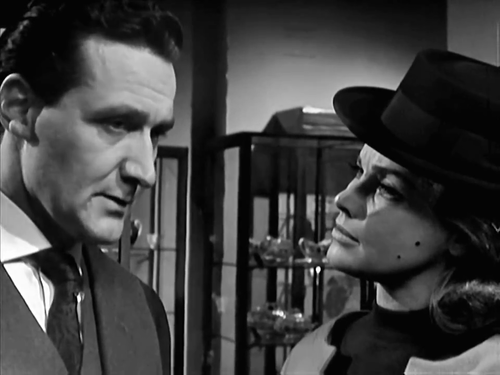Immortal Clay (02-16, January 1963)
I mostly prefer to think of this episode as the one with the Turkish Bath, because that’s pretty much the highlight of the whole thing. Steed and Cathy are once more on the job, this time investigating a man’s death in a pottery that has been developing (maybe) an indestructible clay. The danger is that this will fall into the wrong hands, so Steed’s superior dispatches him to learn everything there is to know about pottery in 24 hours. Meanwhile, Cathy already knows everything.
They enter into a family melodrama of epic proportions. The pottery is run by the Marling brothers, one of whom has a wife who may have been having an affair with the dead man. The other is stuck on Mara, a beauty-pageant runner-up who dreams of marrying rich so that she can become an actress. She’s being pursued by one of the potters, who is so violently jealous that he might kill her, himself or anyone else at a moment’s notice.
The plot within itself is a good one – the idea of an unbreakable ceramic with worldwide implications, the little battles of intrigue going on in the pottery – and might have paid off. Unfortunately, far too much time is spent with the frankly dull secondary characters and not enough with Steed and Cathy. The success or failure of an Avengers episode usually depends on how much time the leads spend in the same space, and this one gives them very little to do together. There’s a good villain in the form of De Groot (Steve Plytas, an early-season doppelganger), but he appears late and does not do much until the end.
I mentioned the Turkish bath scene, though, which provides a few minutes of watching Steed strip off and rub himself down with a towel … which for me is worth the price of admission. There are also one or two scenes between Steed and Mara that have a bit of pop. Cathy is sadly underused, doing little aside from smoking a few cigarettes and glaring at Steed when he makes a pun. Even this late in the game, the uses of her character seem to elude the writers, who sometimes give her plenty to do and other times push her off to the side in favor of other character development that won’t really matter in the long run.
But there is that Turkish bath…



